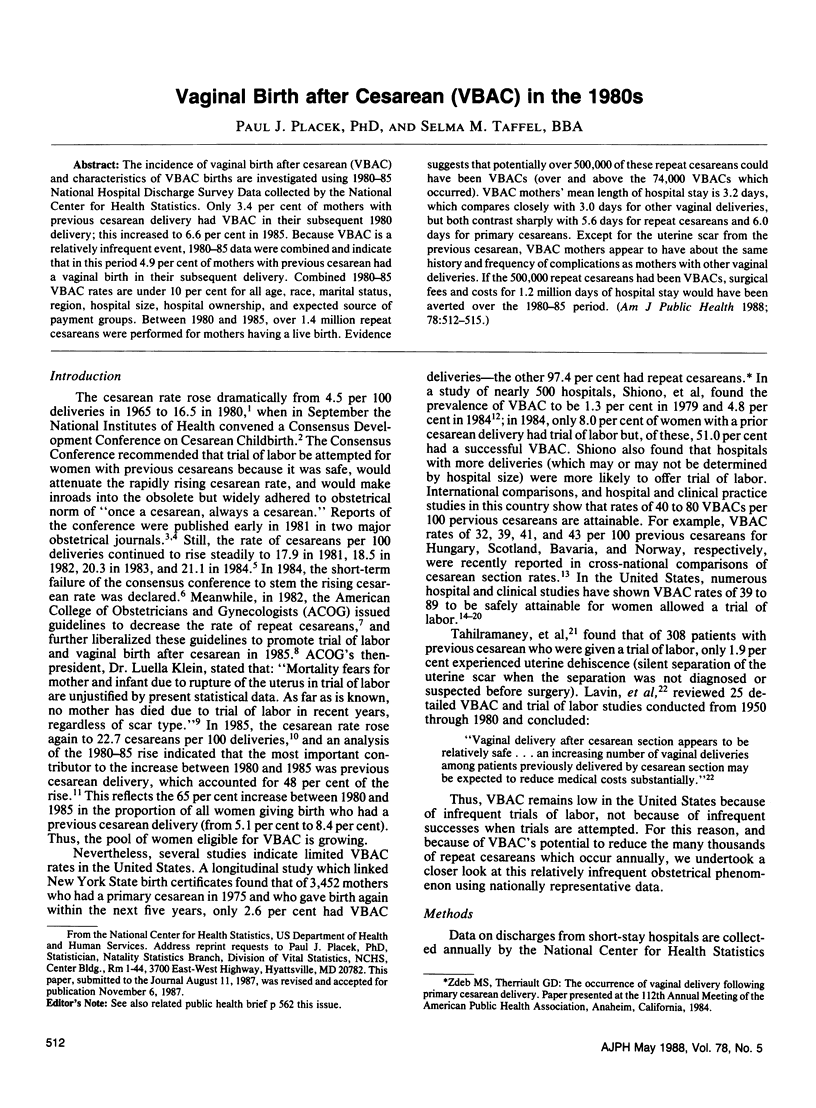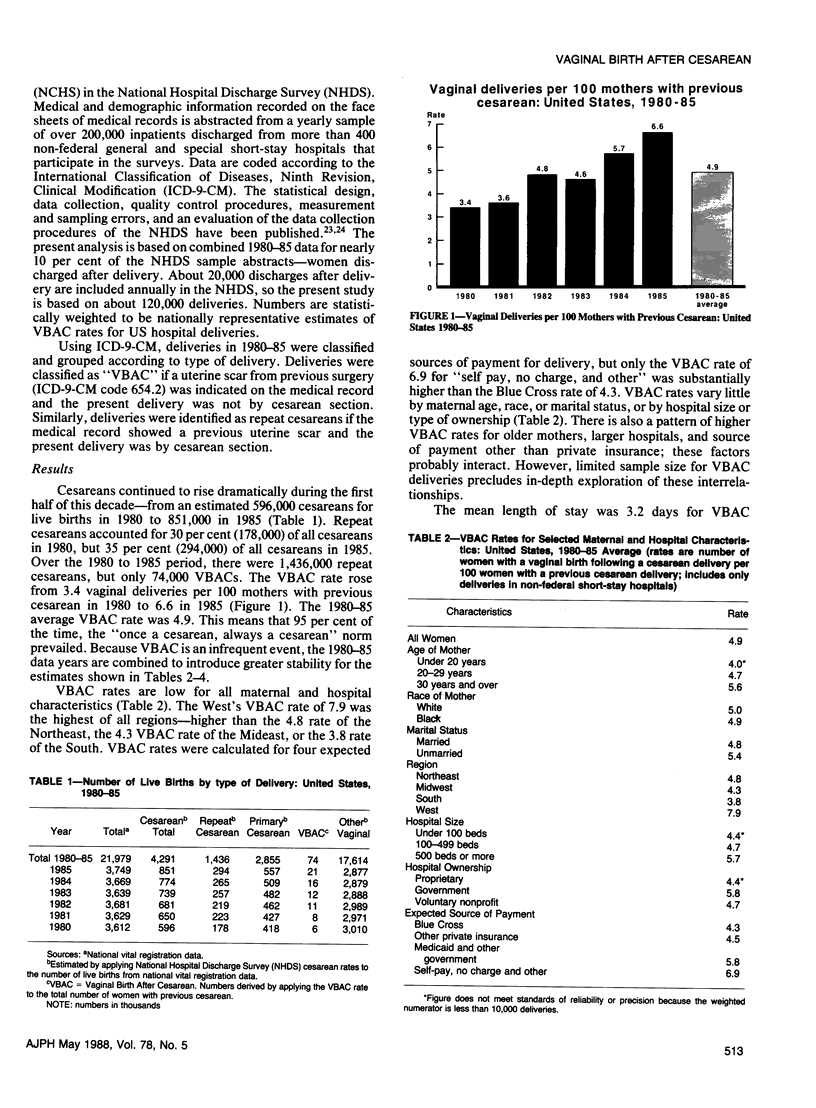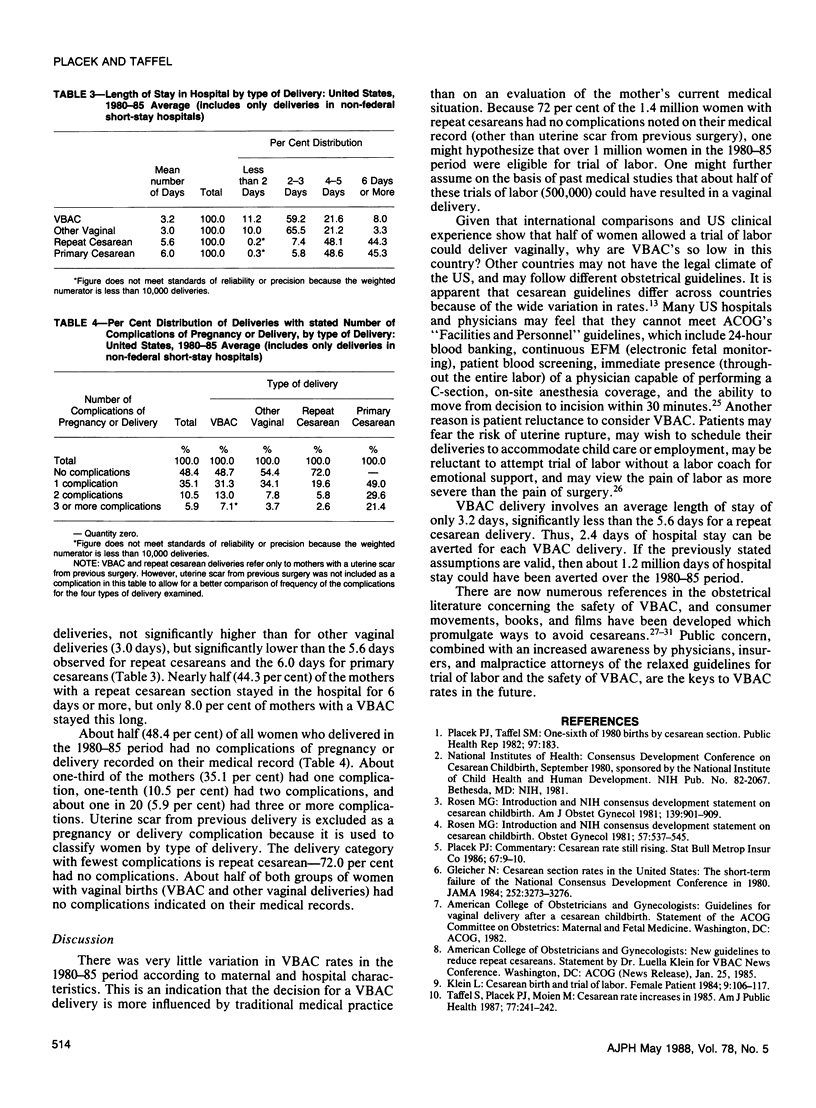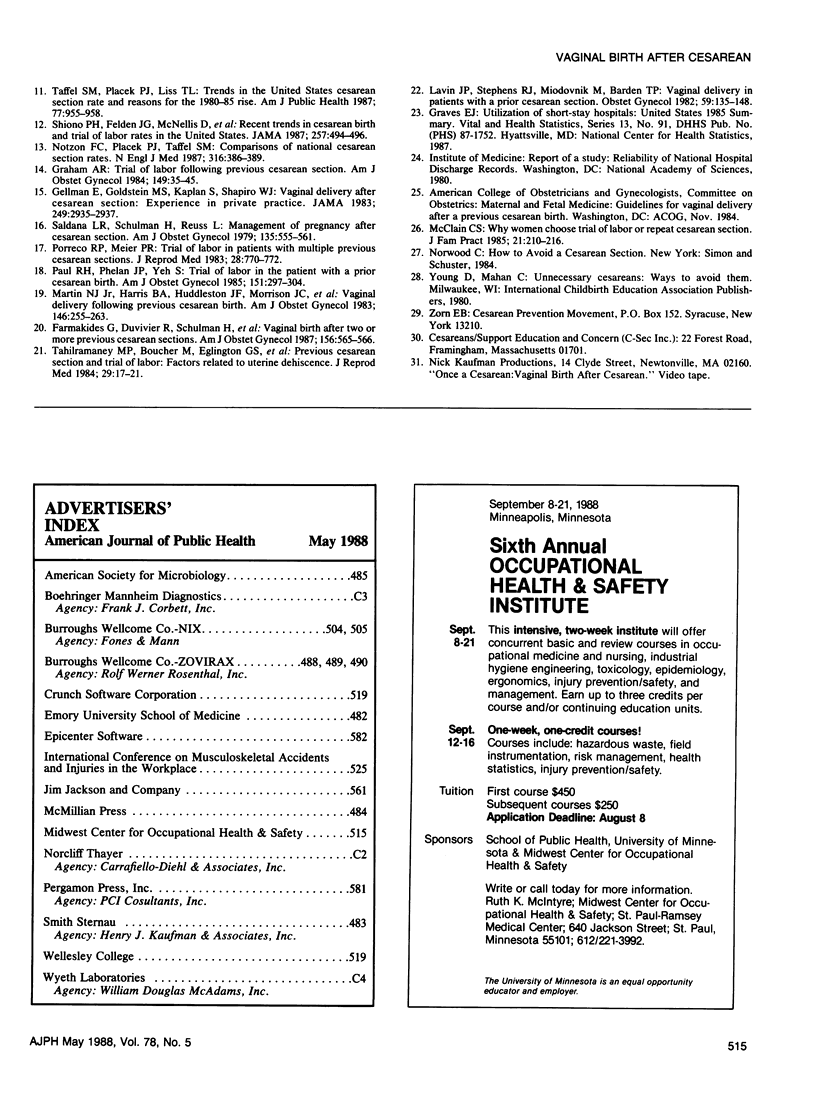Abstract
The incidence of vaginal birth after cesarean (VBAC) and characteristics of VBAC births are investigated using 1980-85 National Hospital Discharge Survey Data collected by the National Center for Health Statistics. Only 3.4 per cent of mothers with previous cesarean delivery had VBAC in their subsequent 1980 delivery; this increased to 6.6 per cent in 1985. Because VBAC is a relatively infrequent event, 1980-85 data were combined and indicate that in this period 4.9 per cent of mothers with previous cesarean had a vaginal birth in their subsequent delivery. Combined 1980-85 VBAC rates are under 10 per cent for all age, race, marital status, region, hospital size, hospital ownership, and expected source of payment groups. Between 1980 and 1985, over 1.4 million repeat cesareans were performed for mothers having a live birth. Evidence suggests that potentially over 500,000 of these repeat cesareans could have been VBACs (over and above the 74,000 VBACs which occurred). VBAC mothers' mean length of hospital stay is 3.2 days, which compares closely with 3.0 days for other vaginal deliveries, but both contrast sharply with 5.6 days for repeat cesareans and 6.0 days for primary cesareans. Except for the uterine scar from the previous cesarean, VBAC mothers appear to have about the same history and frequency of complications as mothers with other vaginal deliveries. If the 500,000 repeat cesareans had been VBACs, surgical fees and costs for 1.2 million days of hospital stay would have been averted over the 1980-85 period.
Full text
PDF



Selected References
These references are in PubMed. This may not be the complete list of references from this article.
- Farmakides G., Duvivier R., Schulman H., Schneider E., Biordi J. Vaginal birth after two or more previous cesarean sections. Am J Obstet Gynecol. 1987 Mar;156(3):565–566. doi: 10.1016/0002-9378(87)90051-2. [DOI] [PubMed] [Google Scholar]
- Gellman E., Goldstein M. S., Kaplan S., Shapiro W. J. Vaginal delivery after cesarean section. Experience in private practice. JAMA. 1983 Jun 3;249(21):2935–2937. [PubMed] [Google Scholar]
- Gleicher N. Cesarean section rates in the United States. The short-term failure of the National Consensus Development Conference in 1980. JAMA. 1984 Dec 21;252(23):3273–3276. [PubMed] [Google Scholar]
- Graham A. R. Trial labor following previous cesarean section. Am J Obstet Gynecol. 1984 May 1;149(1):35–45. doi: 10.1016/0002-9378(84)90289-8. [DOI] [PubMed] [Google Scholar]
- Lavin J. P., Stephens R. J., Miodovnik M., Barden T. P. Vaginal delivery in patients with a prior cesarean section. Obstet Gynecol. 1982 Feb;59(2):135–148. [PubMed] [Google Scholar]
- Martin J. N., Jr, Harris B. A., Jr, Huddleston J. F., Morrison J. C., Propst M. G., Wiser W. L., Perlis H. W., Davidson J. T. Vaginal delivery following previous cesarean birth. Am J Obstet Gynecol. 1983 Jun 1;146(3):255–263. doi: 10.1016/0002-9378(83)90746-9. [DOI] [PubMed] [Google Scholar]
- McClain C. S. Why women choose trial of labor or repeat cesarean section. J Fam Pract. 1985 Sep;21(3):210–216. [PubMed] [Google Scholar]
- NIH consensus development statement on cesarean childbirth. The Cesarean Birth Task Force. Obstet Gynecol. 1981 Apr;57(4):537–545. [PubMed] [Google Scholar]
- Notzon F. C., Placek P. J., Taffel S. M. Comparisons of national cesarean-section rates. N Engl J Med. 1987 Feb 12;316(7):386–389. doi: 10.1056/NEJM198702123160706. [DOI] [PubMed] [Google Scholar]
- Paul R. H., Phelan J. P., Yeh S. Y. Trial of labor in the patient with a prior cesarean birth. Am J Obstet Gynecol. 1985 Feb 1;151(3):297–304. doi: 10.1016/0002-9378(85)90290-x. [DOI] [PubMed] [Google Scholar]
- Placek P. J., Taffel S. M., Moien M. Cesarean rate increases in 1985. Am J Public Health. 1987 Feb;77(2):241–242. doi: 10.2105/ajph.77.2.241-a. [DOI] [PMC free article] [PubMed] [Google Scholar]
- Porreco R. P., Meier P. R. Trial of labor in patients with multiple previous cesarean sections. J Reprod Med. 1983 Nov;28(11):770–772. [PubMed] [Google Scholar]
- Saldana L. R., Schulman H., Reuss L. Management of pregnancy after cesarean section. Am J Obstet Gynecol. 1979 Nov 1;135(5):555–561. doi: 10.1016/s0002-9378(16)32976-3. [DOI] [PubMed] [Google Scholar]
- Shiono P. H., Fielden J. G., McNellis D., Rhoads G. G., Pearse W. H. Recent trends in cesarean birth and trial of labor rates in the United States. JAMA. 1987 Jan 23;257(4):494–497. [PubMed] [Google Scholar]
- Taffel S. M., Placek P. J., Liss T. Trends in the United States cesarean section rate and reasons for the 1980-85 rise. Am J Public Health. 1987 Aug;77(8):955–959. doi: 10.2105/ajph.77.8.955. [DOI] [PMC free article] [PubMed] [Google Scholar]
- Tahilramaney M. P., Boucher M., Eglinton G. S., Beall M., Phelan J. P. Previous cesarean section and trial of labor. Factors related to uterine dehiscence. J Reprod Med. 1984 Jan;29(1):17–21. [PubMed] [Google Scholar]


